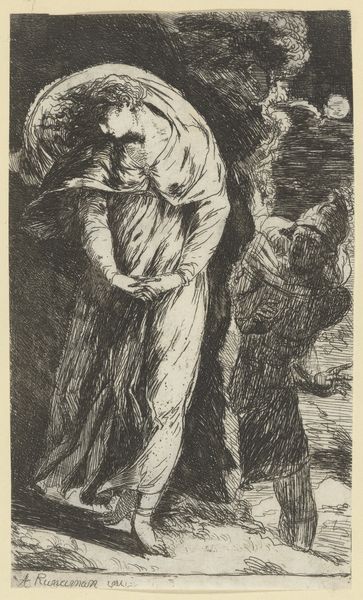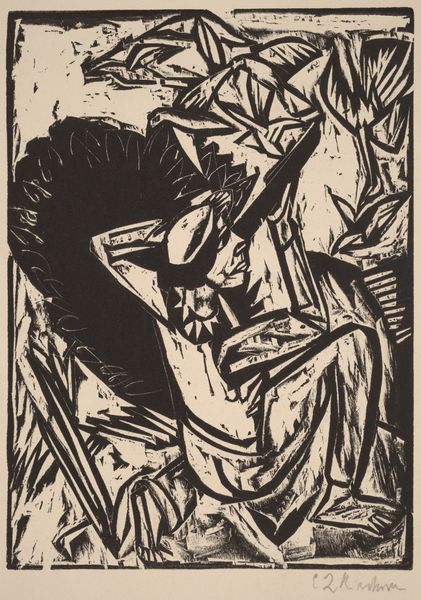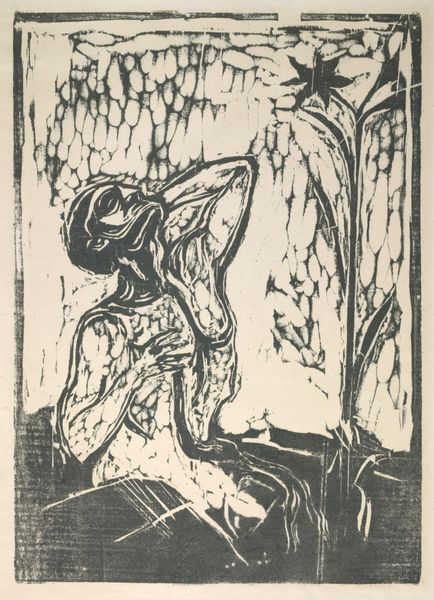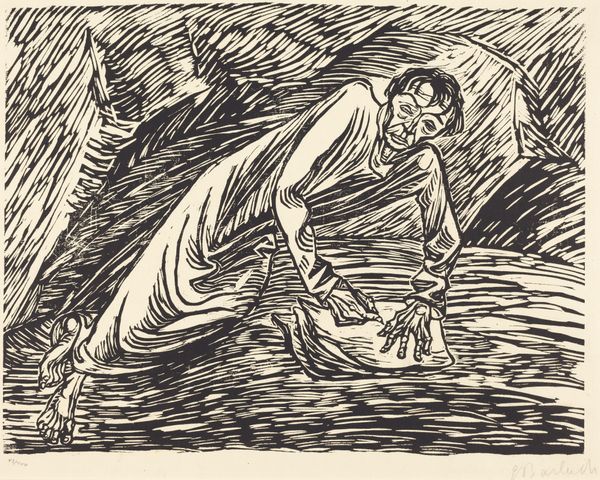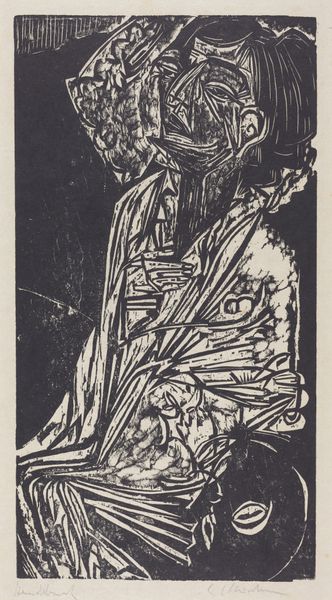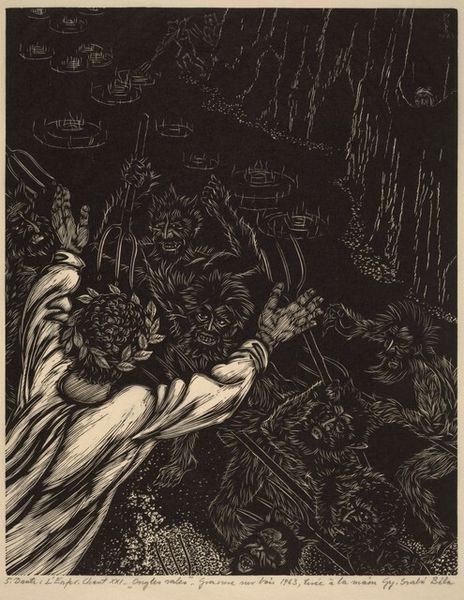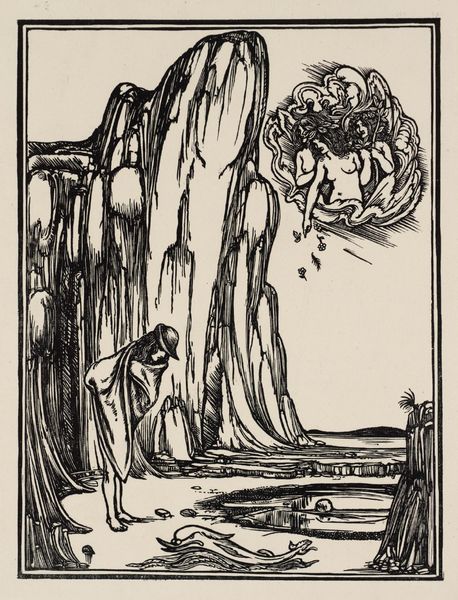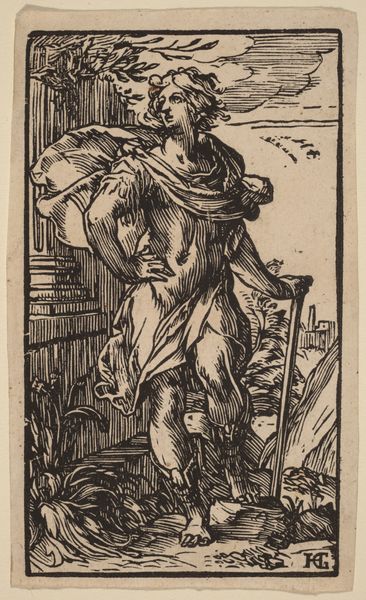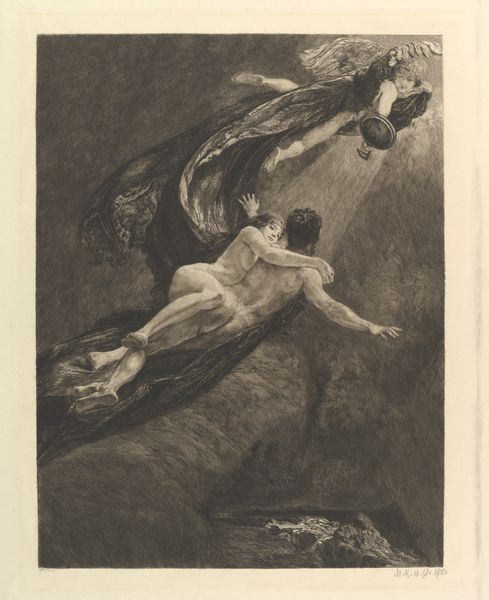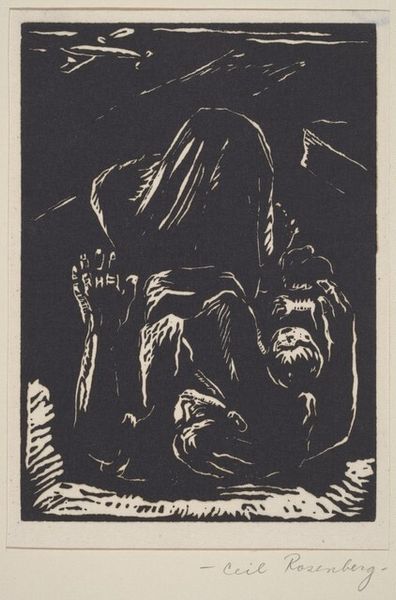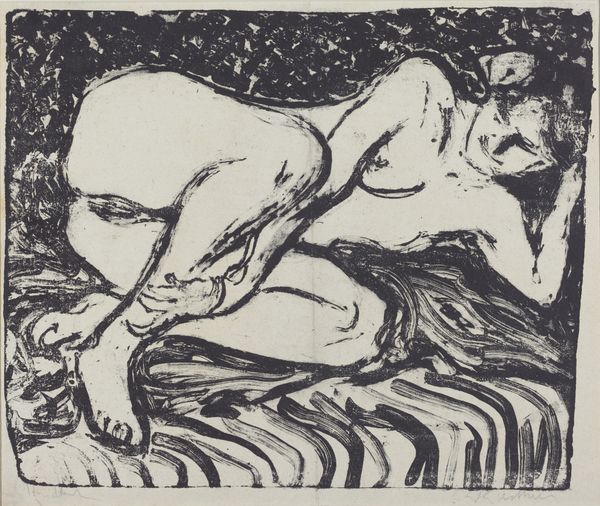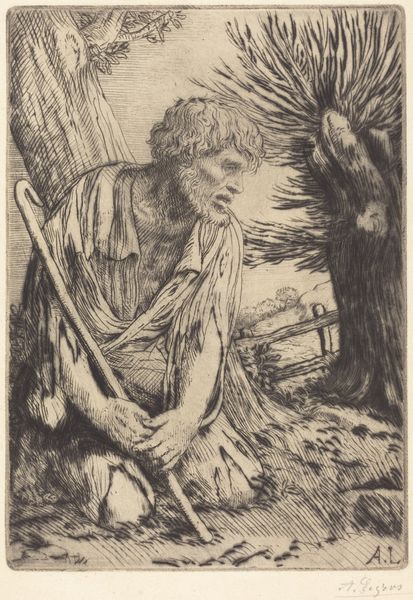
drawing, print, woodcut
#
drawing
# print
#
landscape
#
woodcut
#
realism
Dimensions: block: 4 1/8 x 5 1/2 in. (10.5 x 14 cm)
Copyright: Public Domain
Editor: We’re looking at “Digger,” a woodcut by Jean-François Millet from 1863. It's powerfully stark, black and white, and I’m struck by how the strong contrast highlights the labor of the figure. What do you see in this print? Curator: The pronounced contrast certainly directs the eye. Observe how the angular lines of the woodcut delineate the figure, fragmenting his form while simultaneously underscoring the physicality of his labor. Note the diagonal strokes, suggestive of both light and shadow, which disrupt the planar surface and add a dynamic quality to the composition. Editor: The dynamism you mention, how does that reconcile with the stillness of the image itself? Curator: It resides within the tension between stasis and implied motion. The composition guides the viewer’s eye in a cyclical fashion from the ground, upward to the bent form, and back down again, reflecting the repetitive nature of the worker's actions. We perceive implied action within a medium designed for graphic immediacy. What does the texture evoke? Editor: It feels very raw, immediate, unrefined. The process is almost as present as the subject itself. I get the impression that Millet wasn't interested in romanticizing labor. Curator: Precisely. The absence of delicate detail speaks volumes. Consider how Millet deploys formal means, not merely to depict labor, but to embody the visceral nature of manual toil through bold, almost crude application of medium. Editor: It makes you think about how artists’ choices aren't just decorative. They build meaning, don’t they? Curator: Precisely, an articulation not only *of* labour, but the very experience *of* labor.
Comments
No comments
Be the first to comment and join the conversation on the ultimate creative platform.
